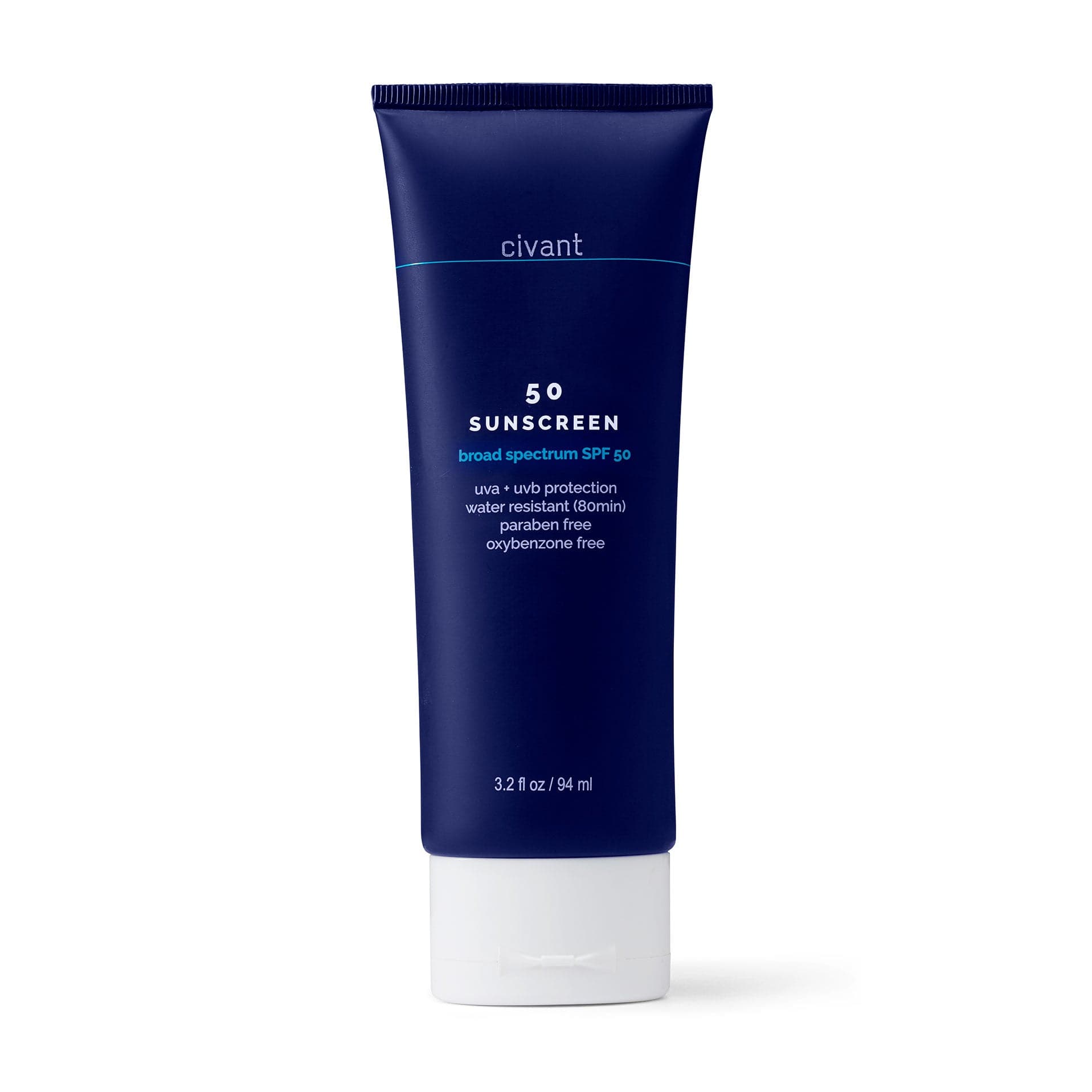Hyperpigmentation and dark spots are something that many people have to deal with – regardless of your skin color or type. Although there are many different reasons why you might be experiencing dark spots, like hormonal changes, reactions to medications, or acne scarring, one of the most common reasons that hyperpigmentation occurs is because of UV exposure.
We all know that spending too long in the sun is bad for us, especially if we skip the SPF. However, SPF is by far the easiest, and cheapest, ways you can prevent dark spots. If you’re worried about hyperpigmentation, here’s our guide to preventing dark spots with sun protection.
Can sun exposure cause dark spots?
The sun can cause a lot of damage to our skin, from triggering dark spots to causing something more serious, like skin cancer. The reason the sun is so damaging to our skin is because of the UV rays it emits. These UV rays come in two forms; UVA rays which can cause skin aging, and UVB rays which cause burns.
If you’re out in the sun for a long time, without wearing SPF, these UVA and UVB rays can damage the DNA in your skin cells. It can also encourage your skin to overproduce melanin as a way to protect itself, which is what causes the appearance of dark spots and hyperpigmentation. Dark spots that are caused by sun exposure will often appear on your face, or other areas of the body which are most frequently in direct sunlight like your arms, shoulders, or décolletage.
How does SPF protect your skin?
Wearing SPF every day – yes, every single day regardless of the weather – is one of the most effective ways of preventing the chances of dark spots appearing. Sunscreen inhibits UV rays from encouraging excess melanin production which prevents dark spots from appearing, and reduce the chance of existing dark spots getting any darker.
Most experts will recommend that everyone uses at least SPF 30 every day, but if you can get your hands on an SPF 50, this will provide higher protection and is the preferred option – especially if you do already have dark spots.
How to choose the right SPF for your skin type?
When shopping for a daily SPF, we always recommend going with a wide spectrum, SPF50 product, as this will be the most protective against the sun’s rays. Aside from this, you can also find suncreams to suit any skin type: gels for oily skin, thick creams for dry skin, and specialized formulas for sensitive skin.
The Civant SPF 50 Sunscreen is specially designed to work on all skin types and tones – plus, you can use it on both your face and body. It’s also dermatologist-tested, cruelty-free, and completely vegan!
How much SPF should you apply?
If you’re applying SPF to your face, you should be using around a teaspoon’s worth of product, which is equivalent to two fingers’ worth. For the rest of your body, you should use one teaspoon’s worth of product for each arm and leg, as well as the same amount for the front of your body and your back. In total, this will amount to around a shot glass full of SPF. It may seem like a lot, but this is the amount you need for the SPF to really do its job defending your skin against the sun.
How often should you reapply SPF?
You should be reapplying your SPF every two hours ideally, this is because SPF will not last all day and will start to wear off your skin. As it wears off, so will the protection, so you want to make sure you’re constantly topping up. If you’re sweating a lot or going in and out of the sea/pool, you should be reapplying more frequently.
5 tips to stay safe in the sun
-
Try and avoid the sun at peak times
The sun’s rays are at their strongest between the times of 10 am and 4 pm, so it’s normally best to avoid being in direct sunlight during this period. If you are out in the sun, try to stay in the shade as much as you can and be extra diligent about your SPF application.
-
Don’t forget your sunglasses and hat
Sunglasses are not just a fashion accessory, but something that can protect your eyes from the damage of UVA and UVB rays. Similarly, wearing a hat can protect your scalp from burning and can also help keep your face out of the sun.
-
Wear protective clothing
Try to cover up as much as possible when you’re in the sun to keep your body out of direct sunlight. Choose lightweight materials like cotton to keep yourself cool, and make sure to cover up areas like your shoulders and chest.
-
Be aware of how water, snow, and sand can reflect sunlight
When you’re enjoying a day at the beach, the last thing you may be thinking of is how things like water and sand can be reflecting the sun and intensify the power of the sun’s rays. If you’re around water, sand, or snow, you may be getting a lot more sun than you realize so it’s more important to reapply SPF and stay in the shade whenever possible.
- Limit tanning
- Although we may all love the feeling of coming back from a holiday looking bronzed, remember that there’s no such thing as a safe tan – stick to the fake tan instead!



